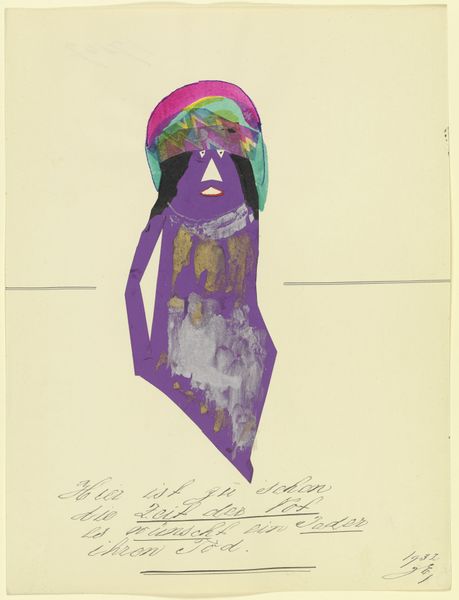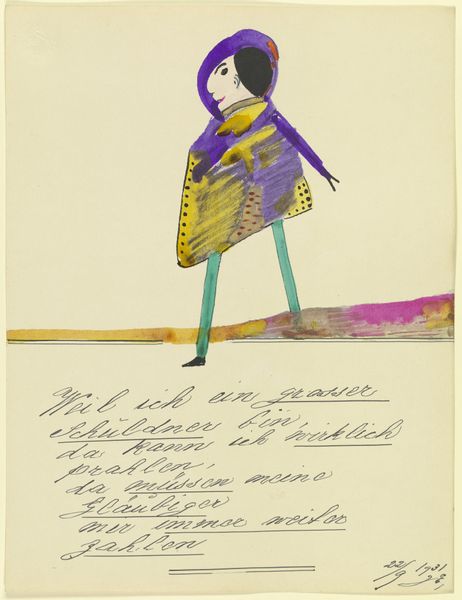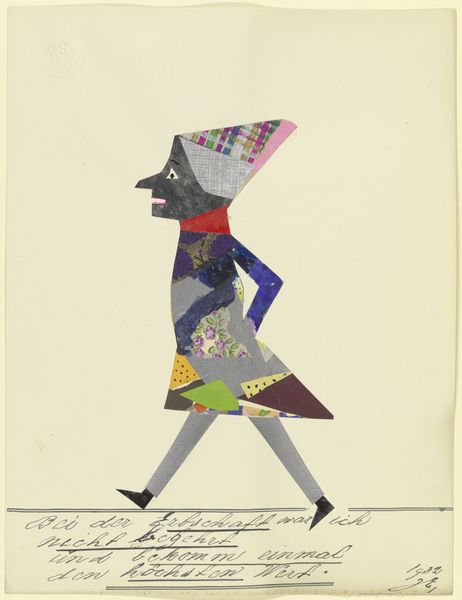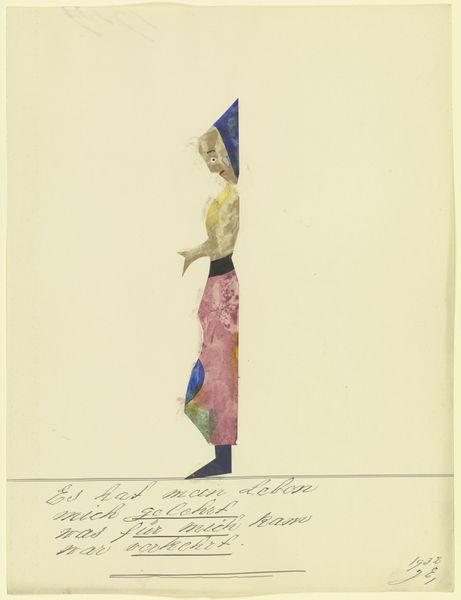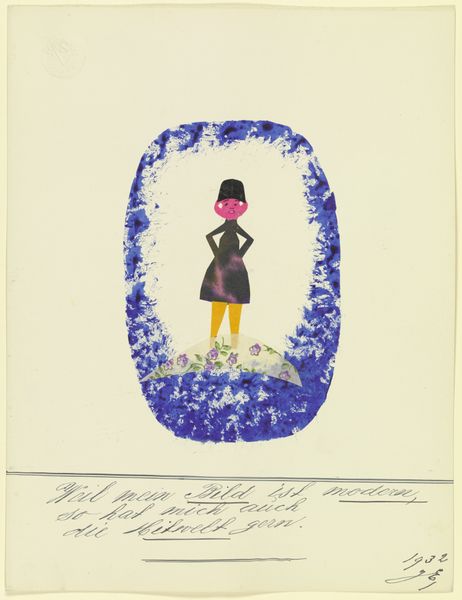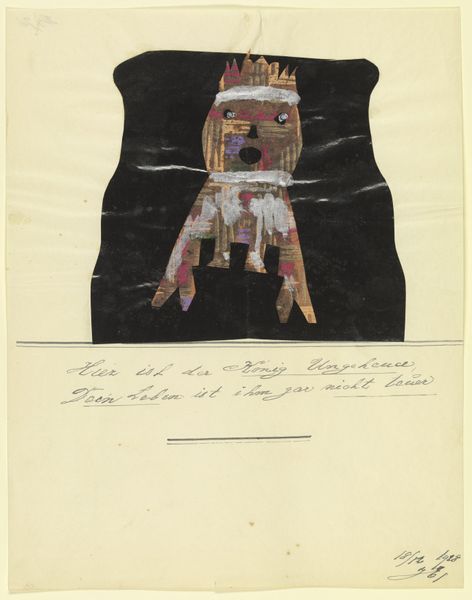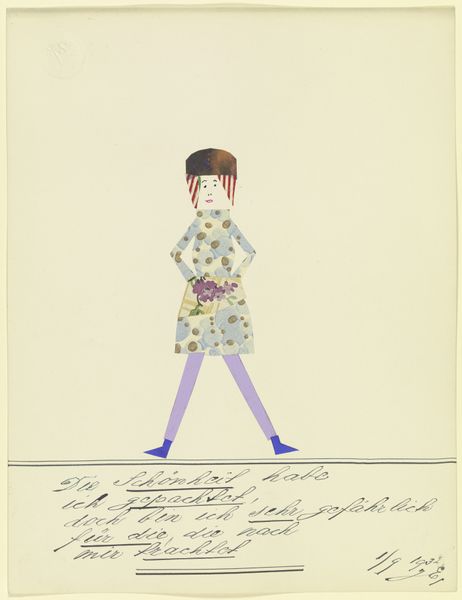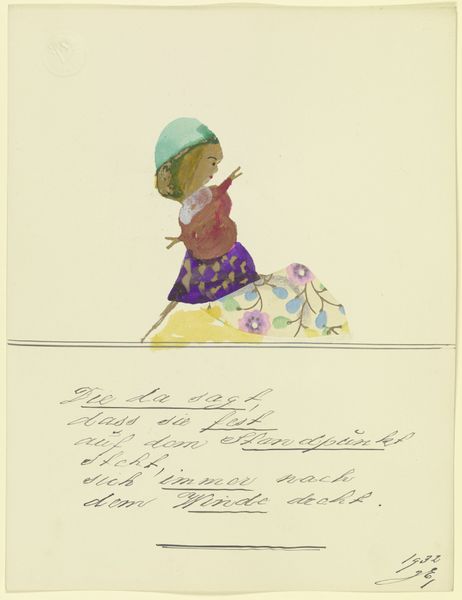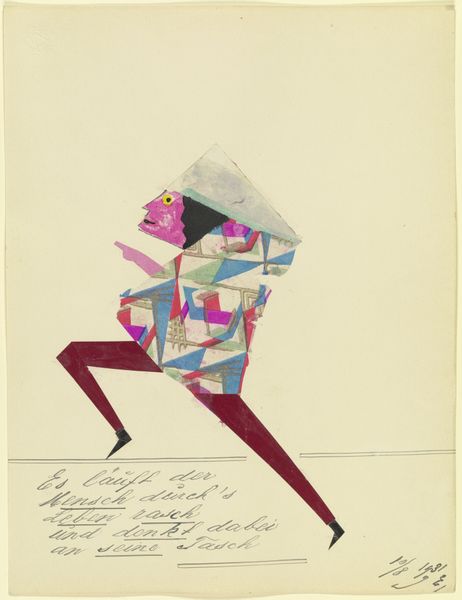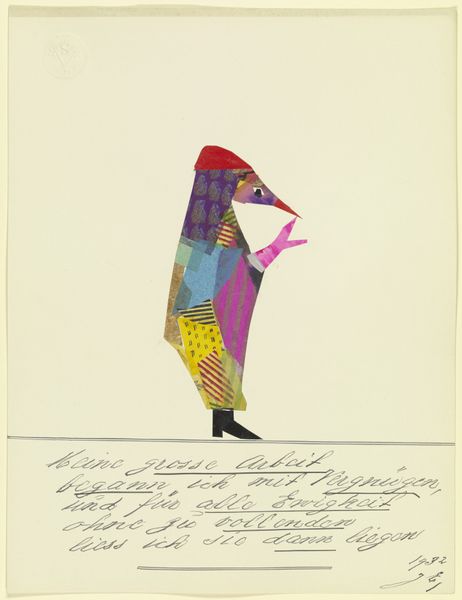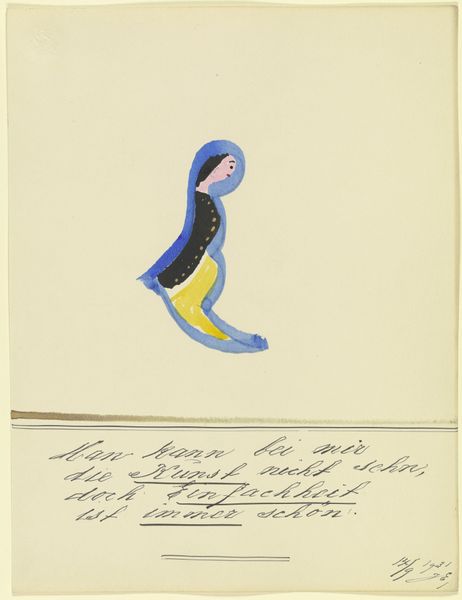
drawing, collage, paper
#
17_20th-century
#
drawing
#
collage
#
caricature
#
caricature
#
paper
#
german
#
modernism
Copyright: Public Domain
Curator: Look at the starkness of this collage. It's disquieting. Editor: That’s interesting you say that. What you are observing is the artwork "13633 (_He is from Abyssinia…_)" by John Elsas, created in 1931. It is composed of paper, drawing, and collage techniques, a striking example of German modernism. Curator: Well, that answers some of it, I guess. There's a tension here between the rudimentary construction, the child-like application of color and material, and… what reads to me as something more biting, unsettling even. The geometry of the garment, the almost robotic stiffness of the figure. There's something vaguely dehumanizing about it. Editor: Right, let’s consider Elsas' historical position in 1930s Germany. How might this piece be speaking to labor, particularly intellectual or creative labor? This could be read as an indictment of both the constraints of production under rising fascism. Curator: I see the intellectual framework, but, consider its formal elements—the juxtaposition of geometric and organic shapes, for example. What symbolic language do these elements employ to evoke the viewer’s feeling? I find its directness powerful. Editor: Indeed. This blend really speaks to the turbulent context of its creation. Collage as a medium was also important. The cut-and-paste process mimics a chaotic approach to how labor becomes fragmented or specialized during industrialization. And his choice of such elementary supplies draws from readily accessible resources, and that hints to what type of economic restrictions may apply in an oppressive society. Curator: And what do you make of that carefully penned script just below the figure? Editor: Right, there are German words there, mentioning Abyssinia but also questioning one's role in the "Krieg". Curator: Precisely, the piece pulls together personal history, international politics, artistic materiality. The sharp shapes lend the figure an almost violent, geometric presence, despite its small scale. The lack of realistic representation forces viewers to decode symbolic forms. Editor: And these raw materials challenge traditional notions of artistic value. With his reliance on cut-and-paste methods he implicates his access to resource, even suggesting how making art becomes repurposed given the turmoil of rising National Socialism. I wonder who had time and luxury to produce 'high art'. Curator: It does. Editor: Ultimately it leaves you pondering the cost of creating.
Comments
No comments
Be the first to comment and join the conversation on the ultimate creative platform.
